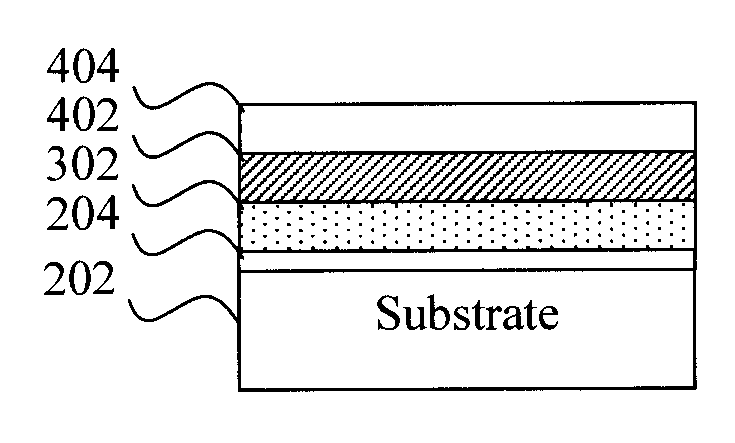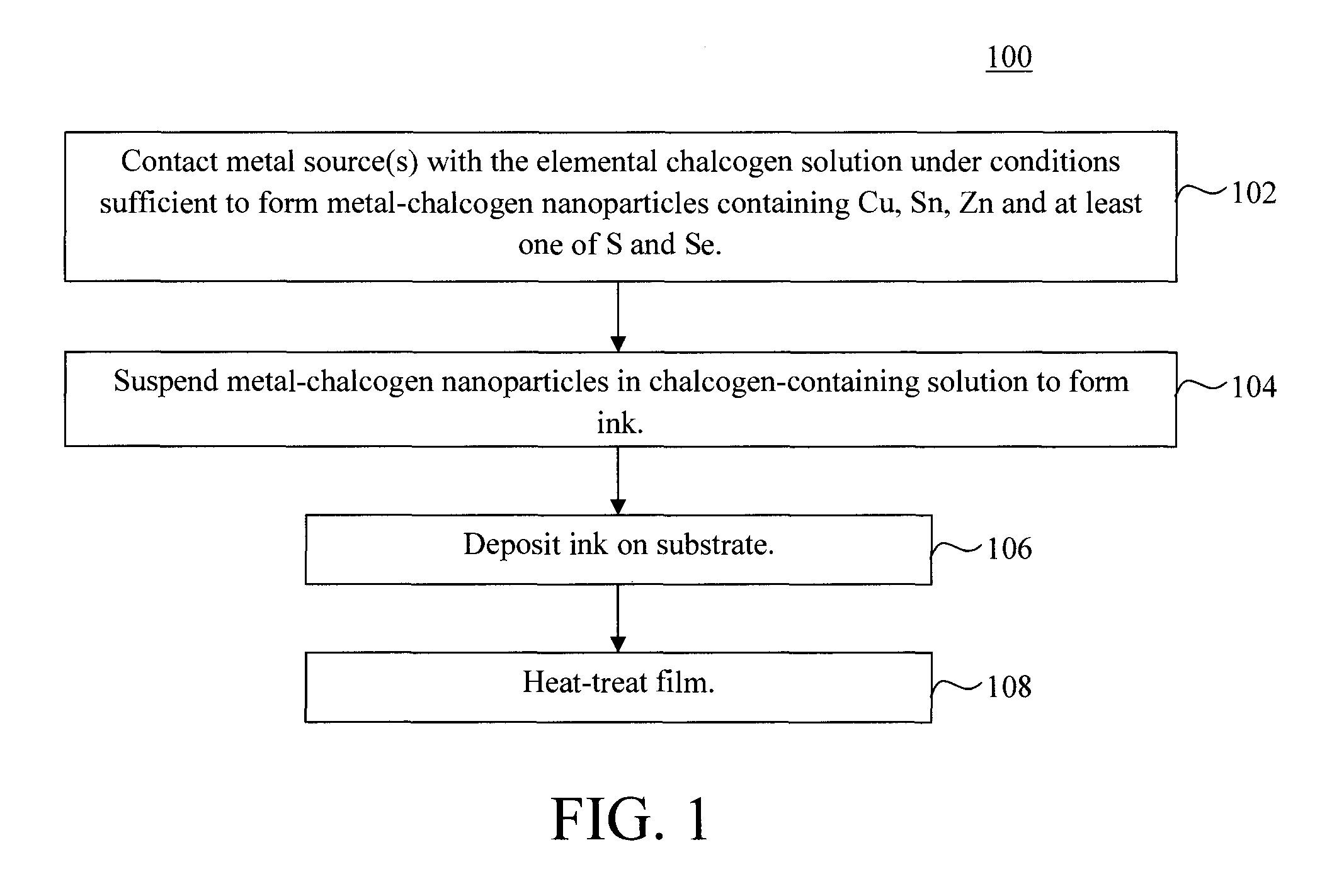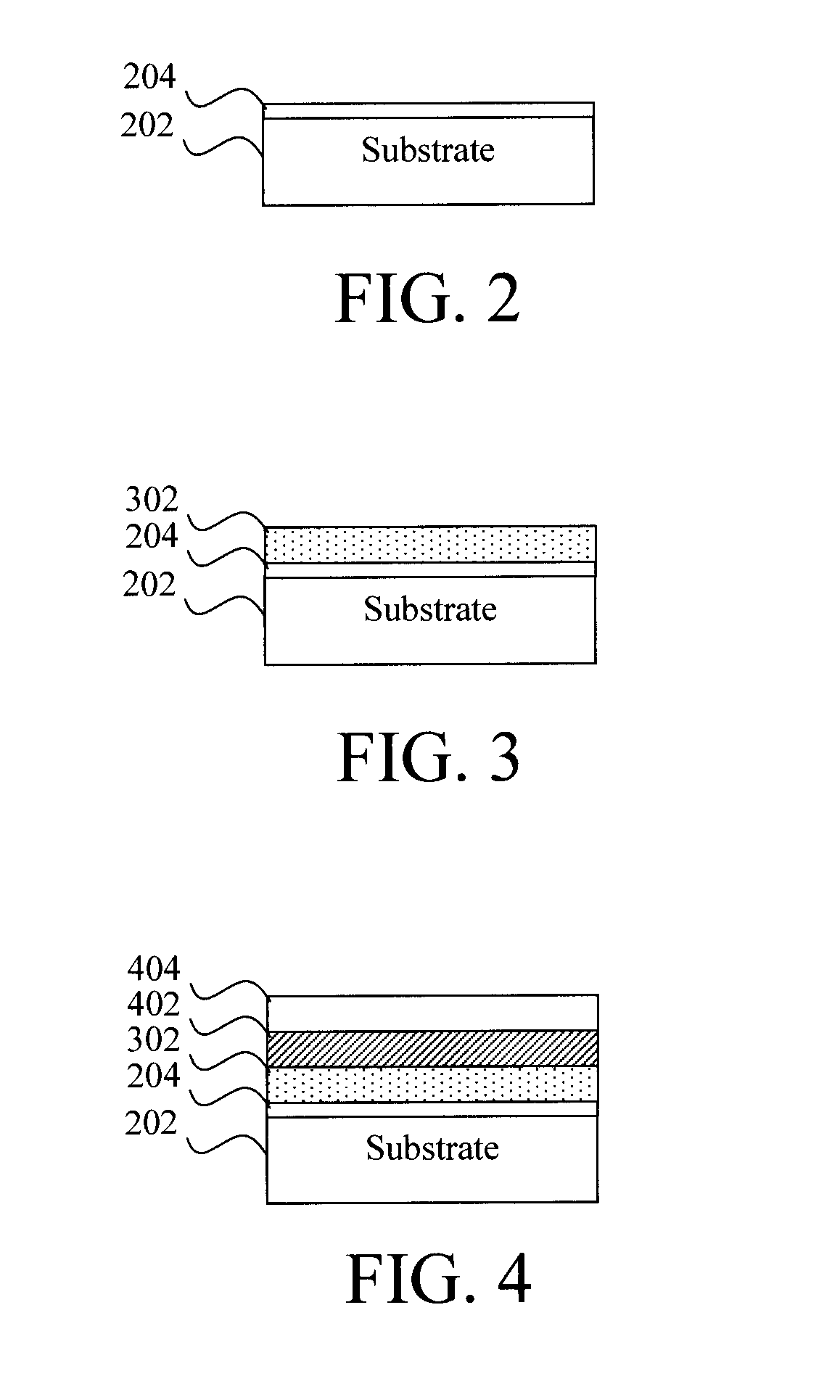Process for Preparation of Elemental Chalcogen Solutions and Method of Employing Said Solutions in Preparation of Kesterite Films
- Summary
- Abstract
- Description
- Claims
- Application Information
AI Technical Summary
Benefits of technology
Problems solved by technology
Method used
Image
Examples
example 1
[0080]In this example, a selenium / ethylene glycol solution is produced. 1.98 grams (g) of selenium powder, of formula Se, and 0.4 g of ammonia borane, of formula NH3BH3, are mixed with 4 mL of ethylene glycol, of formula (CH2OH)2 (5-6 M Se). The mixture is slowly heated to from about 80° C. to about 100° C. under vigorous stirring on a hot plate. A red solution is formed after releasing a large amount of gas (possibly H2), as indicated by bubbling during the heat treatment. The color of the solution can become colorless, when the temperature ramps too fast. From about 200 microliters (μL) to about 500 μL of ammonia hydroxide, of formula NH4OH, is useful to accelerate the dissolving process. However, for Se concentrations lower than 2 M, ammonia hydroxide is not necessarily needed to affect the dissolution.
example 2
[0081]In this example, a selenium / dimethyl sulfoxide (DMSO) solution is produced. 0.8 g of selenium powder, of formula Se, and 0.3 g of ammonia borane, NH3BH3, are added into 4 milliliters (mL) of DMSO of formula (CH3)2SO, under stirring. The mixture is slowly heated to around 80° C. on a hot plate. The black powders slowly dissolve into DMSO and the colorless solution becomes green. Slow bubbling is observed during the heat treatment. However, excess heating may cause uncontrollable bubbling and result in Se powders to precipitate. After all the powders are dissolved, the solution is cooled down to room temperature with continued stirring. From about 500 μL to about 1 mL of ammonia hydroxide may be needed to accelerate the dissolving process.
example 3
[0082]In this example a selenium / 2-methoxyethanol solution is produced. 1.58 g of selenium powder, Se, and 0.3 g of ammonia borane, NH3BH3, are mixed with 4 mL of 2-methoxyethanol, of formula C3H8O2, under stirring. The mixture is slowly heated up on a hot plate until the solution is bubbling. When large amount of out-gassing is happening (possibly H2), the solution is immediately placed on another cold stir plate and stirred continuously until all the powders are dissolved. Then the solution is cooled down to room temperature. In this case, from about 100 μL to about 500 μL of ammonia hydroxide can help accelerate the dissolving process.
PUM
 Login to View More
Login to View More Abstract
Description
Claims
Application Information
 Login to View More
Login to View More - R&D
- Intellectual Property
- Life Sciences
- Materials
- Tech Scout
- Unparalleled Data Quality
- Higher Quality Content
- 60% Fewer Hallucinations
Browse by: Latest US Patents, China's latest patents, Technical Efficacy Thesaurus, Application Domain, Technology Topic, Popular Technical Reports.
© 2025 PatSnap. All rights reserved.Legal|Privacy policy|Modern Slavery Act Transparency Statement|Sitemap|About US| Contact US: help@patsnap.com



